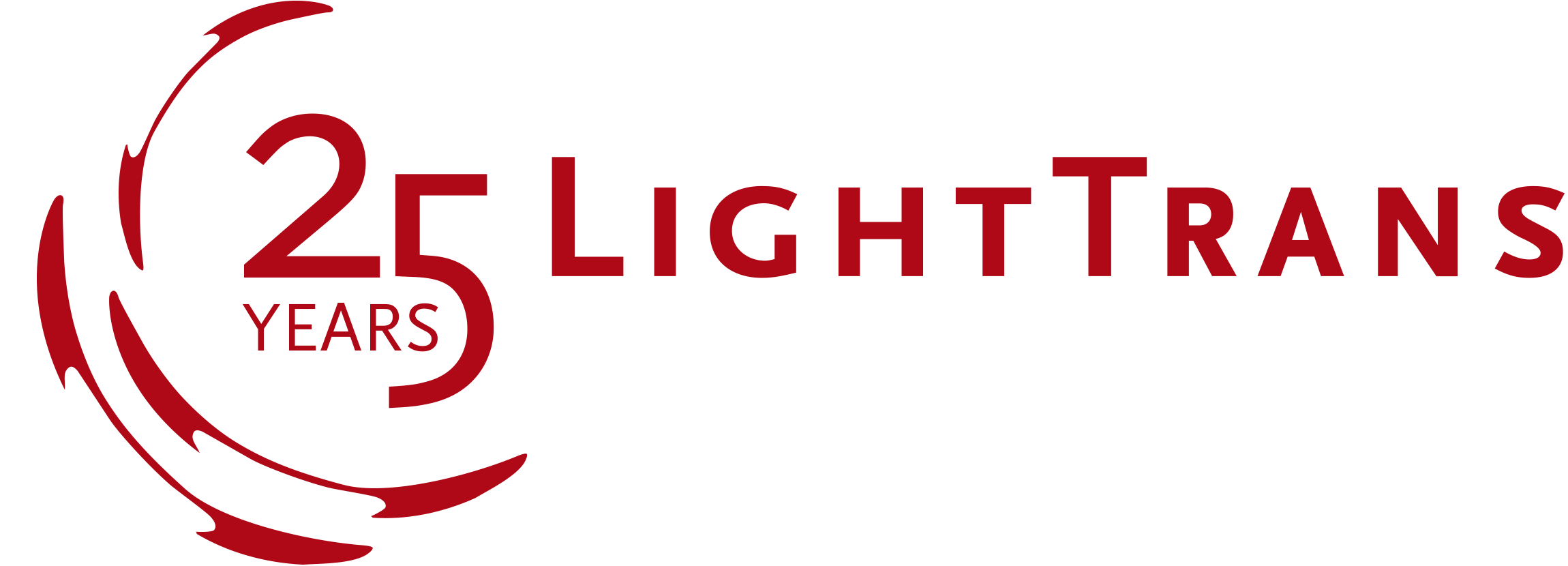What’s new in our Optical Modeling and Design Software?
Save your seat for our Getting Started Online Training in March
Did you already register for our online training course? If not, don't miss the chance to learn from our optical engineering experts how to use VirtualLab Fusion efficiently. The online training will be held twice to adapt to different time zones worldwide.
15 – 16 March 2021 | 17:30 – 20:30 (CET)
17 – 18 March 2021 | 08:30 – 11:30 (CET)
Simulations for Fiber Optics with VirtualLab Fusion
Did you catch our recent webinar on the exciting outlook for fiber technologies in VirtualLab Fusion? Lots of new features will be coming soon – a new fiber-mode calculator, fiber component, and new fiber-coupling efficiency detectors – resulting in improved and even more user-friendly workflows. But while we wait for the new features to arrive in coming releases, there is already lots for you to enjoy in the current version! Check out the use cases linked below for some inspiration.
Read moreX-Ray Imaging Systems: Kirkpatrick-Baez Mirrors and Single Grating Interferometer
X-ray imaging is a valuable tool in a wide variety of applications, such as medical imaging and industrial inspection. In VirtualLab Fusion, we have successfully realized several well-known x-ray imaging systems, which can be used to explore the imaging properties of the setup in question, or to illustrate the special x-ray imaging principle. In this newsletter, we show two x-ray imaging experiments: (1) Using Kirkpatrick-Baez mirrors to create a nanometer-scale x-ray imaging spot; (2) Illustrating the phase-contrast x-ray imaging principle with a single grating interferometer.
Read moreHigh-NA Microscopy Systems with Inclusion of Gratings
Gratings, as test samples or as components of systems in their own right, can be applied in microscopy. For example, Ernst Abbe famously used a grating as the sample to investigate the resolution of a microscopy system. The magnified image of the grating is obtained at the image plane. Another example is that of Structured Illumination Microscopy (SIM), which uses the demagnified image of the grating at the focal plane for illuminating the fluorescent samples [R. Heintzmann and C. Cremer, SPIE, 1999]. VirtualLab Fusion provides a straightforward way to model such systems in a fully vectorial manner. We demonstrate by applying different commercial microscopy lenses (Nikon) combined with gratings in VirtualLab Fusion.
Read moreJoin our next Webinars on Fiber & Flat Optics!
Register now for our next webinars and save your seat.
Fiber Optics – 03 February
Flat Optics – 04 February
Engineered PSF for High-NA Microscopy Imaging
The microscopy imaging techniques are developed rapidly in recent decades. The PSF (Point Spread Function) is very often not an Airy disk at the image plane. A donut shape can be engineered when imaging a dipole source orientated along the longitudinal axis. We demonstrate in VirtualLab Fusion that different asymmetric PSFs, which are not Airy disks, are obtained when the orientation of the dipole source changes. Moreover, a double-helix PSF can be obtained by inserting a certain phase mask in the pupil plane of a microscopy system [Ginni Grover et al., Opt. Exp. 2012]. With such an engineered PSF, even a small defocus of the object can be observed, i.e., the axial resolution can be improved drastically compared to the traditional imaging approach. We demonstrate this phenomenon by applying a commercial microscopy lens (Nikon) system in VirtualLab Fusion.
Read moreSimultaneous Spatial and Temporal Focusing (SSTF)
For applications in the area of ultrashort pulse laser technologies, where the properties of the field must be controlled in both the space and time domains, “Simultaneous Spatial and Temporal Focusing” (SSTF) is a frequently used technique. Such setups often lead to spatiotemporal effects like the pulse front tilt. We built a commonly used SSTF setup to investigate the spatiotemporal behavior of the field in the focus and the effects of various system parameters on the resulting pulse front tilt.
Read moreSave your Seat for Our First User Meetup on Gratings
Register now and save your seat for our first User Meetup. To inaugurate this new format we have chosen the topic of gratings.
21 January | 09:00 – 20:00 (CET)
Read more











